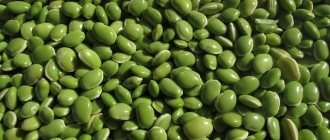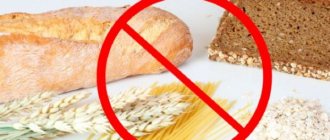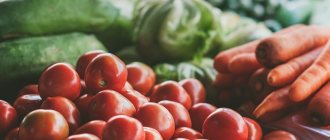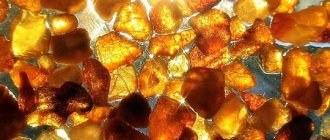What is vitamin E for?
One of the vital vitamins, the deficiency of which leads to systemic disorders in the body. It belongs to the fat-soluble category and is more fully absorbed in combination with vitamins A, C, D, zinc and selenium. It has a pronounced antioxidant property: it inhibits oxidation processes, prevents damage to healthy cells by decay products.
Vitamin E regulates the processes of tissue restoration of the skin, mucous membranes, internal organs, the production of collagen, hormones, and amino acid metabolism. Its normal level ensures timely tissue regeneration, protection from excessive ultraviolet radiation, exposure to carcinogenic substances, premature aging, normal functioning of the reproductive system, and hematopoiesis.
Tocopherol hypervitaminosis
The human body at any age needs increased dosages of vitamin E. Newborn children under 6 months of age need 3 mg of this substance every day. As a rule, with natural feeding, this volume is compensated by breast milk. Over the age of 6 months, the child’s body should receive at least 4 mg of this substance. From 1 to 3 years of age, the need for vitamin E increases to 6 mg. Children aged 4 to 10 years need at least 7 mg of tocopherol per day. With a balanced diet, the possibility of developing tocopherol hypervitaminosis is practically excluded. Clinical manifestations of excess of this vitamin usually develop with the use of synthetic forms of vitamin E.
Symptoms of Vitamin E Deficiency
Hypovitaminosis in childhood causes the development of dermatitis, rickets and decreased vision. Long-term deficiency slows down the development of speech, provokes anemia, neurological disorders: coordination of movements, attention.
In adults, the condition of the skin and hair worsens, inflammatory and endocrine diseases occur more often, the cardiovascular system suffers, fertility decreases, women experience menstrual irregularities, and premenstrual syndrome is severe. With severe hypovitaminosis, hormonal imbalance, infertility, and signs of early aging develop. If a vitamin E deficiency is detected, in addition to correcting the diet, it is necessary to take special pharmaceuticals.
Characteristics of tocopherol
For the first time, information about this organic compound was provided by Herbert Evans, who in 1922 conducted a series of medical experiments. Laboratory rats that received daily food supplemented with B vitamins, ascorbic acid, vitamin D and A eventually became unable to reproduce. After wheat germ and lettuce were introduced into the diet of experimental animals, the reproductive ability of laboratory rats was restored. From this point on, tocopherol was called the reproduction vitamin.
In 1931, clinical trials were continued by Olcott and Mattill, who discovered additional properties of this vitamin. It has been clinically proven that the form of tocopherol found in food is most successfully absorbed by the human body, in contrast to the synthetic form of vitamin E found in pharmaceutical preparations.
How to take vitamin E correctly
When administered orally, capsules with alpha-tocopherol are swallowed whole without crushing. Drink with enough water. Recommended time of administration is during meals. It is advisable to include foods rich in vitamin E in your diet.
The treatment regimen is individual, depending on the physical condition and age. For prevention, adults are recommended to take 400 mg. vitamin per day. The course of therapy depends on the type of disorder present. It is recommended to take the vitamin cyclically: daily for several weeks, with repeat treatment after a break.
The drug does not affect the ability to drive vehicles and complex equipment, does not cause drowsiness, decreased performance, or changes in the speed of psychomotor reactions.
Vitamin E content in fruits and vegetables
Table of vitamin E content in products from the category - fruits and vegetables. The chart shows the percentage of vitamin E from the daily requirement, calculated based on a 100 g serving of the product.
| № | Quantity | Share of daily value per 100 g | |
| 1 | Peanuts raw | 8.3 mg | 57,1% |
| 2 | Roasted peanuts | 4.9 mg | 33,8% |
| 3 | Dried apricots | 4.3 mg | 29,7% |
| 4 | Canned green olives | 3.8 mg | 26,1% |
| 5 | Fresh dandelion leaves | 3.4 mg | 23,6% |
| 6 | Hot chili peppers dried in the sun | 3.1 mg | 21,5% |
| 7 | Taro cooked tubers | 2.9 mg | 20,1% |
| 8 | Fresh turnip tops | 2.9 mg | 19,6% |
| 9 | Broccoli raab cooked | 2.5 mg | 17,3% |
| 10 | Cilantro (coriander leaves) fresh | 2.5 mg | 17,1% |
| 11 | Fresh chicory leaves | 2.3 mg | 15,5% |
| 12 | Fresh kale | 2.3 mg | 15,5% |
| 13 | Radicchio fresh | 2.3 mg | 15,5% |
| 14 | Fresh black persimmon (sapota) | 2.1 mg | 14,5% |
| 15 | Boiled spinach | 2.1 mg | 14,2% |
| 16 | Avocado fresh | 2.1 mg | 14,2% |
| 17 | Fresh spinach | 2.0 mg | 13,9% |
| 18 | Fresh grape leaves | 2.0 mg | 13,7% |
| 19 | Fresh chard | 1.9 mg | 12,9% |
| 20 | Canned olives | 1.7 mg | 11,3% |
| 21 | Fresh broccoli raab | 1.6 mg | 11,1% |
| 22 | Fresh red bell pepper | 1.6 mg | 10,8% |
| 23 | Raw curly cabbage | 1.5 mg | 10,5% |
| 24 | Fresh beet tops | 1.5 mg | 10,3% |
| 25 | Boiled asparagus | 1.5 mg | 10,3% |
| 26 | Parsnip root raw | 1.5 mg | 10,2% |
| 27 | Fresh kiwi | 1.5 mg | 10,0% |
| 28 | Boiled broccoli | 1.5 mg | 9,9% |
| 29 | Fresh cranberries | 1.3 mg | 9,0% |
| 30 | Fresh blackberries | 1.2 mg | 8,0% |
| 31 | Raw asparagus | 1.1 mg | 7,7% |
| 32 | Raw pumpkin | 1.1 mg | 7,3% |
| 33 | Boiled carrots | 1.0 mg | 7,1% |
| 34 | Raw beetroot | 1.0 mg | 6,8% |
| 35 | Fresh black currant | 1.0 mg | 6,8% |
| 36 | Boiled pink beans | 1.0 mg | 6,7% |
| 37 | Boiled variegated beans (Pinto) | 0.9 mg | 6,4% |
| 38 | Fresh leek | 0.9 mg | 6,3% |
| 39 | Mango fresh | 0.9 mg | 6,2% |
| 40 | Fresh apricot | 0.9 mg | 6,1% |
| 41 | Fresh Brussels sprouts | 0.9 mg | 6,0% |
| 42 | Cooked cabbage (boiled) | 0.9 mg | 6,0% |
| 43 | Boiled black beans | 0.9 mg | 6,0% |
| 44 | Fresh mulberries | 0.9 mg | 6,0% |
| 45 | Frozen logan berry | 0.9 mg | 6,0% |
| 46 | Fresh raspberries | 0.9 mg | 6,0% |
| 47 | Dry chickpeas | 0.8 mg | 5,6% |
| 48 | Boiled or baked pumpkin | 0.8 mg | 5,5% |
| 49 | Fresh broccoli | 0.8 mg | 5,3% |
| 50 | Naranjilla frozen | 0.8 mg | 5,1% |
| 51 | Fresh parsley | 0.8 mg | 5,1% |
| 52 | Fresh guava | 0.7 mg | 5,0% |
| 53 | Fresh peach, pitted | 0.7 mg | 5,0% |
| 54 | Fresh watercress | 0.7 mg | 4,8% |
| 55 | Red hot fresh chili pepper | 0.7 mg | 4,7% |
| 56 | Edamame cooked | 0.7 mg | 4,7% |
| 57 | Carrots raw (fresh) | 0.7 mg | 4,5% |
| 58 | Fresh pomegranate | 0.6 mg | 4,1% |
| 59 | Fennel, raw (fruit or root) | 0.6 mg | 4,0% |
| 60 | Fresh blueberries | 0.6 mg | 3,9% |
| 61 | Cooked tomatoes | 0.6 mg | 3,8% |
| 62 | Fresh tomatoes | 0.5 mg | 3,7% |
| 63 | Boiled kohlrabi (cabbage) | 0.5 mg | 3,6% |
| 64 | Fresh onion | 0.5 mg | 3,5% |
| 65 | Chinese fresh broccoli | 0.5 mg | 3,4% |
| 66 | Leeks cooked | 0.5 mg | 3,4% |
| 67 | Fresh kohlrabi | 0.5 mg | 3,3% |
| 68 | Chinese cooked broccoli | 0.5 mg | 3,3% |
| 69 | Boiled burdock root | 0.5 mg | 3,2% |
| 70 | Boiled green beans (asparagus) | 0.5 mg | 3,2% |
| 71 | Fresh endive | 0.4 mg | 3,0% |
| 72 | Boiled Brussels sprouts | 0.4 mg | 2,9% |
| 73 | Fresh arugula | 0.4 mg | 2,9% |
| 74 | Cooked eggplant | 0.4 mg | 2,8% |
| 75 | Escarole cooked | 0.4 mg | 2,7% |
| 76 | French fries | 0.4 mg | 2,7% |
| 77 | Dried bananas | 0.4 mg | 2,7% |
| 78 | Fresh vegetable physalis | 0.4 mg | 2,6% |
| 79 | Green bell pepper, fresh | 0.4 mg | 2,5% |
| 80 | Fresh gooseberries | 0.4 mg | 2,5% |
| 81 | Boiled chickpeas | 0.4 mg | 2,4% |
| 82 | Boiled soybeans (ripe) | 0.4 mg | 2,4% |
| 83 | Fresh jackfruit | 0.3 mg | 2,3% |
| 84 | Yams cooked | 0.3 mg | 2,3% |
| 85 | Fresh papaya | 0.3 mg | 2,1% |
| 86 | Raw rutabaga | 0.3 mg | 2,1% |
| 87 | Fresh strawberries | 0.3 mg | 2,0% |
| 88 | Boiled black-eyed beans | 0.3 mg | 1,9% |
| 89 | Cherimoya fresh | 0.3 mg | 1,8% |
| 90 | Rhubarb stem raw | 0.3 mg | 1,8% |
| 91 | Fresh celery | 0.3 mg | 1,8% |
| 92 | Raw okra | 0.3 mg | 1,8% |
| 93 | Raw ginger root | 0.3 mg | 1,8% |
| 94 | Fresh plum | 0.3 mg | 1,8% |
| 95 | Raw sweet potato | 0.3 mg | 1,8% |
| 96 | Potato starch | 0.3 mg | 1,7% |
| 97 | Fresh lettuce | 0.2 mg | 1,5% |
| 98 | Fresh lime | 0.2 mg | 1,5% |
| 99 | Fresh green onion | 0.2 mg | 1,4% |
| 100 | Fresh chives | 0.2 mg | 1,4% |
| 101 | Fresh clementine | 0.2 mg | 1,4% |
| 102 | Fresh tangerines | 0.2 mg | 1,4% |
| 103 | Prunes | 0.2 mg | 1,3% |
| 104 | Amaranth grains cooked | 0.2 mg | 1,3% |
| 105 | Boiled artichokes | 0.2 mg | 1,3% |
| 106 | Jerusalem artichoke raw | 0.2 mg | 1,3% |
| 107 | Grapes (red or green) fresh | 0.2 mg | 1,3% |
| 108 | Fresh apples | 0.2 mg | 1,2% |
| 109 | Fresh iceberg lettuce | 0.2 mg | 1,2% |
| 110 | Fresh head lettuce | 0.2 mg | 1,2% |
| 111 | Fresh oranges | 0.2 mg | 1,2% |
| 112 | Fresh savoy cabbage | 0.2 mg | 1,2% |
| 113 | Feijoa fresh | 0.2 mg | 1,1% |
| 114 | Fresh cabbage, white cabbage | 0.2 mg | 1,0% |
| 115 | Fresh red lettuce | 0.2 mg | 1,0% |
| 116 | Fresh kumquat | 0.2 mg | 1,0% |
| 117 | Starfruit (starfruit) fresh | 0.2 mg | 1,0% |
| 118 | Fresh lemon, without peel | 0.2 mg | 1,0% |
| 119 | Boiled mung bean | 0.2 mg | 1,0% |
| 120 | Boiled cabbage (white cabbage) | 0.1 mg | 1,0% |
| 121 | Fresh plantains | 0.1 mg | 1,0% |
| 122 | Fresh green peas | 0.1 mg | 0,9% |
| 123 | Fresh grapefruit | 0.1 mg | 0,9% |
| 124 | Fresh Roman salad | 0.1 mg | 0,9% |
| 125 | Fresh pear | 0.1 mg | 0,8% |
| 126 | Chayote raw | 0.1 mg | 0,8% |
| 127 | Cooked squash | 0.1 mg | 0,8% |
| 128 | Seedless raisins | 0.1 mg | 0,8% |
| 129 | Fried or baked zucchini (without oil) | 0.1 mg | 0,8% |
| 130 | Mashed potatoes with milk and butter, prepared | 0.1 mg | 0,8% |
| 131 | Lentils boiled in water | 0.1 mg | 0,8% |
| 132 | Fresh figs | 0.1 mg | 0,8% |
| 133 | Sauerkraut (kimchi) | 0.1 mg | 0,8% |
| 134 | Fresh red cabbage | 0.1 mg | 0,8% |
| 135 | Fresh breadfruit | 0.1 mg | 0,7% |
| 136 | Fresh red or white currants | 0.1 mg | 0,7% |
| 137 | Fresh bananas | 0.1 mg | 0,7% |
| 138 | Fresh tamarind | 0.1 mg | 0,7% |
| 139 | Fresh sprouted mung bean | 0.1 mg | 0,7% |
| 140 | Fresh Chinese cabbage | 0.1 mg | 0,6% |
| 141 | Boiled corn | 0.1 mg | 0,6% |
| 142 | Canned corn | 0.1 mg | 0,6% |
| 143 | Raw garlic | 0.1 mg | 0,5% |
| 144 | Fresh cauliflower | 0.1 mg | 0,5% |
| 145 | Fresh soursop | 0.1 mg | 0,5% |
| 146 | Boiled cauliflower | 0.1 mg | 0,5% |
| 147 | Raw corn | 0.1 mg | 0,5% |
| 148 | Fresh lychees | 0.1 mg | 0,5% |
| 149 | Fresh cherries | 0.1 mg | 0,5% |
| 150 | Dates Deglet nur | 0.1 mg | 0,3% |
| 151 | Fresh cantaloupe melon | 0.1 mg | 0,3% |
| 152 | Fresh watermelon | 0.1 mg | 0,3% |
| 153 | Baked potatoes | 0.0 mg | 0,3% |
| 154 | Raw beets | 0.0 mg | 0,3% |
| 155 | Boiled beets | 0.0 mg | 0,3% |
| 156 | Fresh shallots | 0.0 mg | 0,3% |
| 157 | Peas boiled in water (ripe) | 0.0 mg | 0,2% |
| 158 | Canned green peas | 0.0 mg | 0,2% |
| 159 | Fresh cucumbers | 0.0 mg | 0,2% |
| 160 | Turnips raw | 0.0 mg | 0,2% |
| 161 | Boiled red beans (Kidney) | 0.0 mg | 0,2% |
| 162 | Fresh melon | 0.0 mg | 0,1% |
| 163 | Cooked turnips | 0.0 mg | 0,1% |
| 164 | Fresh pineapple | 0.0 mg | 0,1% |
| 165 | Boiled beans (ripe) | 0.0 mg | 0,1% |
| 166 | Fresh onions | 0.0 mg | 0,1% |
| 167 | Boiled onions | 0.0 mg | 0,1% |
| 168 | Fresh sprouted alfalfa seeds | 0.0 mg | 0,1% |
| 169 | Fresh passion fruit | 0.0 mg | 0,1% |
| 170 | Boiled potatoes | 0.0 mg | 0,1% |
| 171 | Raw potatoes | 0.0 mg | 0,1% |
| 172 | Dry soy tofu cheese | 0.0 mg | 0,1% |
| 173 | Hard tofu cheese (linen) | 0.0 mg | 0,1% |
| 174 | Boiled white beans | 0.0 mg | 0,1% |
| 175 | Fresh daikon | 0.0 mg | 0,0% |
| 176 | Ginger extract powder | 0.0 mg | 0,0% |
| 177 | Fresh radish | 0.0 mg | 0,0% |
| 178 | Soy Protein (Isolate) Powder | 0.0 mg | 0,0% |
| 179 | Soy sauce (hydrolyzed) | 0.0 mg | 0,0% |
| 180 | Soy sauce (tamari) | 0.0 mg | 0,0% |
| 181 | Red beans (Kidney) sprouted fresh | n/a | 0,0% |
| 182 | Fresh sprouted variegated beans (Pinto) | n/a | 0,0% |
| 183 | Dried goji berries | n/a | 0,0% |
| 184 | Boiled pigeon peas | n/a | 0,0% |
| 185 | Fresh sprouted peas | n/a | 0,0% |
| 186 | Fresh medlar | n/a | 0,0% |
| 187 | Physalis fresh | n/a | 0,0% |
| 188 | Jujube (Chinese date) fresh | n/a | 0,0% |
| 189 | Dates Majul | n/a | 0,0% |
| 190 | Fresh persimmon | n/a | 0,0% |
| 191 | Chicory root, raw | n/a | 0,0% |
| 192 | Prickly pear (fruit) fresh | n/a | 0,0% |
| 193 | Fresh jambolan | n/a | 0,0% |
| 194 | Fenugreek seeds | n/a | 0,0% |
| 195 | Durian fresh | n/a | 0,0% |
| 196 | Canned heart of palm | n/a | 0,0% |
| 197 | Fresh sprouted lentils | n/a | 0,0% |
| 198 | Fern (shoots) raw | n/a | 0,0% |
| 199 | Fresh Suriname cherries | n/a | 0,0% |
| 200 | Fresh sorrel | n/a | 0,0% |
| 201 | Fresh pomelo | n/a | 0,0% |
| 202 | Fresh purslane | n/a | 0,0% |
| 203 | Java apple fresh | n/a | 0,0% |
| 204 | Rambutan canned | n/a | 0,0% |
| 205 | Fresh carissa fruits | n/a | 0,0% |
| 206 | Kiwano fresh | n/a | 0,0% |
| 207 | Hibiscus flower, fresh | n/a | 0,0% |
| 208 | Salsify (salf's root) raw | n/a | 0,0% |
| 209 | Sapodilla fruits fresh | n/a | 0,0% |
| 210 | Sugar apple fresh | n/a | 0,0% |
| 211 | Fresh Antillean apricot | n/a | 0,0% |
| 212 | Fresh quince | n/a | 0,0% |
| 213 | Fresh amaranth leaves | n/a | 0,0% |
| 214 | Boiled Spanish artichokes | n/a | 0,0% |
| 215 | Boiled bamboo shoots | n/a | 0,0% |
| 216 | Raw milkweed shoots | n/a | 0,0% |
| 217 | Fermented tofu cheese (fuyu) | n/a | 0,0% |
| 218 | Boiled butterbur | n/a | 0,0% |
| 219 | Quinoa fresh | n/a | 0,0% |
| 220 | Boiled green beans | n/a | 0,0% |
| 221 | Fresh green beans | n/a | 0,0% |
| 222 | Soybean cake | n/a | 0,0% |
| 223 | Soy protein (concentrate) powder | n/a | 0,0% |
| 224 | Fresh longan | n/a | 0,0% |
| 225 | Fresh sprouted soybeans | n/a | 0,0% |
| 226 | Fresh elderberry | n/a | 0,0% |
| 227 | Lupine (lupine beans) cooked | n/a | 0,0% |
| 228 | Fresh pumpkin leaves | n/a | 0,0% |
| 229 | Wasabi root raw | n/a | 0,0% |
| 230 | Fresh grapes (muscat varieties) | n/a | 0,0% |
| 231 | Barbados cherry fresh | n/a | 0,0% |
| 232 | Boiled adzuki beans | n/a | 0,0% |
| 233 | Cooked cowpea (boiled) | n/a | 0,0% |










